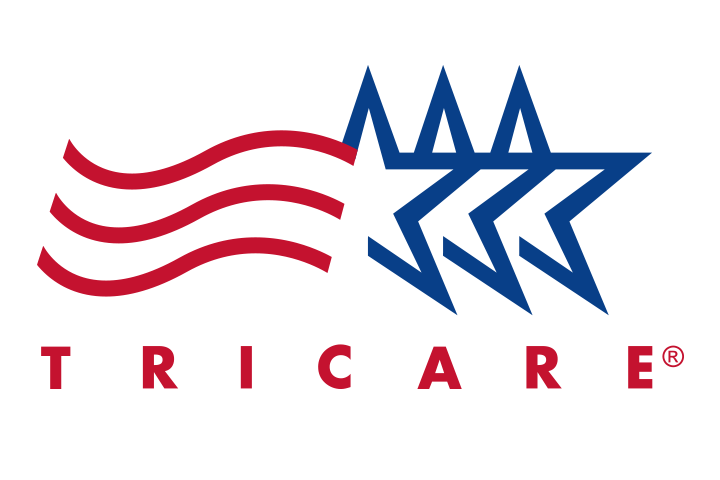
Transformation underway across the Military Health System

Thomas McCaffery, principal deputy assistant secretary of defense for health affairs, with Vice Adm. Raquel Bono, director, Defense Health Agency, celebrated the Defense Health Agency's fifth anniversary on Oct. 1, 2018, by welcoming the first military hospitals and clinics transitioning to the DHA. This was first step for the MHS to emerge as a more integrated and efficient system of health and readiness. (MHS photo by Military Heath System Strategic Communications Division)
FALLS CHURCH, Va. — The Military Health System is one of America’s largest and most complex health-care delivery systems, and the world’s preeminent military-medical enterprise. Saving lives on the battlefield and caring for 9.5 million beneficiaries in one of the nation’s largest health-benefit plans, the Military Health System (MHS) is embarking on a new chapter, ushering unprecedented reform to military medicine. This transformation marks a new way of doing business – from military treatment facility (MTF) management, to electronic health record (EHR) employment, to TRICARE benefit enhancements – and we are working hard to provide medical readiness and health-care delivery that is more integrated and effective than ever before.
Organization Changes in the Military Health System
October 1, 2018, was a landmark day for the Department of Defense (DoD) and military-health care. Jumpstarting one of the largest organizational changes in decades, the Army, Navy and Air Force began the process of transferring the administration and management of their military MTFs to the Defense Health Agency (DHA). Part of a larger effort to implement reforms across the MHS, this historic change was mandated by the National Defense Authorization Act for fiscal year 2017. The law requires all MTFs to adhere to DHA-established standardized policies, procedures and clinical and business processes. In addition, through a phased approach, the DHA will assume direct responsibility for all MTFs across the MHS.
As such, the DHA will be responsible for MTF budgetary matters; information technology; health-care administration and management; administrative policies and procedures; and military-medical construction. We began the first phase on October 1 with the hospitals and clinics at Fort Bragg, Pope Field and Seymour Johnson Air Force Base, North Carolina; Naval Air Station Jacksonville, Florida; Keesler Air Force Base, Mississippi; and Joint Base Charleston, South Carolina. These facilities are in addition to the DHA’s existing management of Walter Reed National Military Medical Center, Fort Belvoir Community Hospital and their associated clinics. Subsequent phases of the MHS transition plan will include more than 50 percent of all hospitals and clinics in the continental U.S. coming under DHA control by October 2019 (phase 2), the remaining hospitals and clinics in the U.S. moving to DHA control by October 2020 (phase 3) and overseas hospitals and clinics by October 2021 (phase 4). Once complete, this transition will enable the MHS to better support the DoD’s medical-readiness requirements; provide a more consistent and higher quality experience for our patients; and deliver a more integrated military-health enterprise that reduces the costs required to operate the system, freeing up resources to invest in additional priorities.
Our highest priority is ensuring our medical forces are ready to support combat forces in the field, around the globe and building and sustaining a world-class health-care system geared at ensuring a medically ready force. The reforms underway create new opportunities for our providers both in our MTFs and through civilian-sector partnerships to build and maintain clinical skills – part and parcel to delivering on our readiness mission to support the warfighter, their families and retirees.
We will also be able to deliver a more integrated and consistent experience for our patients, whether they are active duty, retired or family members. For the first time, all of the department’s health-delivery functions will be under one roof. The DHA will be responsible for both Purchased CareThe TRICARE Health Program is often referred to as purchased care. It is the services we “purchase” through the managed care support contracts.purchased care – what our beneficiaries receive from the civilian sector – and Direct CareDirect care refers to military hospitals and clinics, also known as “military treatment facilities” and “MTFs.”direct care – what our beneficiaries receive at our MTFs. This consolidation will produce a better experience for our patients when we implement improvements such as standardizing appointment scheduling systems and streamlining referral processes.

Thomas McCaffery, principal deputy assistant secretary of defense for health affairs, met with Lt. Gen. Michael Tempel, Bundeswehr Surgeon General of the unified armed forces of Germany, to reaffirm our partnership to enhance interoperability, share knowledge and best practices, and deepen the integration of the two great medical systems. (MHS photo by Military Heath System Strategic Communications Division)
Deploying a New Electronic Health Record
As the MHS embarks on unprecedented reforms, we are utilizing new tools to position us for a successful future. We continue to deploy MHS GENESIS, the new EHR for the military, which will provide enhanced, secure technology to manage health—connecting medical and dental information across the continuum of care, from point of injury to the MTF. MHS GENESIS will replace our legacy systems, which lack the capability to support the delivery of modern, integrated health care. We are scheduled to roll out the next wave in the fall of 2019, with the system-wide completion targeted for calendar year 2023.
The DoD purposefully deployed MHS GENESIS in four initial sites to identify and address lessons learned from initial implementation and utilize those experiences and best practices to inform the next wave of MHS GENESIS sites. We are seeing MHS GENESIS enable easier monitoring and response to patient health through an enhanced set of tools: data reporting and tracking capabilities, improved analytics, computer-aided decision support and a user-friendly patient portal. We’ve seen significant improvements in the four initial MHS GENESIS sites: a substantial decrease in the percentage of emergency-department patients who left without being seen; patient risk-alert systems leading to enhanced clinical decision making; and an avoidance of tens of thousands of duplicate lab tests. Like our broader transformation plans, at the heart of these efforts is a concerted push toward standardization, integration and readiness – and we are moving in the right direction.
TRICARE Enhancements
What do these major organizational changes mean for our beneficiaries? Our ultimate goal is to enhance the quality of care and improve access to health care for all our beneficiaries –making an already strong MHS even better. Alongside the MHS transformation come a number of ongoing enhancements to the TRICARE Health Plan. Over the last year alone, we have kicked off new TRICARE contracts for managed care through our civilian networks, which is more convenient for our beneficiaries when they move, reduces administrative costs, and requires our managed-care support contractors to provide broader access to primary and specialty-care networks. We also rolled out the new TRICARE SelectStarting on January 1, 2018, TRICARE Select replaces TRICARE Standard and Extra. TRICARE Select is a self-managed, preferred provider network plan. TRICARE Select is a fee-for-service option in the United States that allows you to get care from any TRICARE-authorized provider. Enrollment is required to participate. TRICARE Select benefit and implemented a series of enhancements for TRICARE beneficiaries, including expanded access to preventive care, urgent care and mental-health services.
From November 12 through December 10, 2018, TRICARE held its first Open Season enrollment period, the annual period when beneficiaries can make changes to their plan for the following calendar year. Also, we replaced the TRICARE Retiree Dental Program effective December 31, 2018, and now offer our 3.3 million retirees dental coverage through the Federal Employee Dental and Vision Insurance Program, or FEDVIP. Most beneficiaries are also now eligible for vision coverage – something DoD has never offered before. With 10 dental and four vision carriers, FEDVIP provides greater choice and scalability for 4.1 million eligible beneficiaries.
Bringing it all together: what we seek to achieve
The major initiatives underway within the MHS are important steps in answering the call of DoD Secretary Jim Mattis to focus on three lines of effort to execute the National Defense Strategy: enhancing lethality, expanding alliances and partnerships and reforming the way we do business. Secretary Mattis’s call for business reforms is aimed, in his words, at “greater performance and accountability.” Our MHS reforms and the deployment of MHS GENESIS are setting us up to better support medical-readiness requirements and health-care delivery through integration and efficiency. These efforts help lower our costs, working to ensure the department has the resources to sustain the health benefits on which our Service members, retirees and their families depend.
Ultimately, all of these changes – the Military Health System transformation, MHS GENESIS, TRICARE enhancements – are aimed at taking the DoD’s health enterprise to the next level. Amidst these changes, we remain steadfast in our commitment to support readiness, both for our combat forces and for medical personnel. We are committed to meeting the evolving needs of today’s warfighter, and we will continue to deliver the highest quality health care for our 9.5 million active duty, retiree and family members who play such a critical role in keeping our country safe and secure. Our Service members and beneficiaries deserve nothing less.
Cancer Screenings 2019
Infographic
1/30/2019

This infographic lists the types of cancer screenings as part of the TRICARE Health Promotion and Disease Prevention benefit.
Military Health System, industry allies work together to improve health care technology
Article
1/29/2019

Air Force Maj. Gen. Lee Payne visits University of Missouri’s Tiger Institute for Health Innovation
Non-alcoholic fatty liver disease
Infographic
1/29/2019

At the time of this report, there were no published studies of non-alcoholic fatty liver disease (NAFLD) incidence over time among active component U.S. military personnel. Examining the incidence rates of NAFLD and their temporal trends among active component U.S. military members can provide insights into the future burden of NAFLD on the MHS.
Naval Medical Center Camp Lejeune becomes first Level III trauma center in the Navy
Article
1/24/2019

NMCCL’s Trauma Center is the first trauma center in the Navy to service community trauma patients
MHS GENESIS Fact Sheet
Fact Sheet
1/23/2019
This fact sheet describes the DoD’s electronic health record, MHS GENESIS.
MHS GENESIS Patient Portal Fact Sheet
Fact Sheet
1/23/2019
This fact sheet describes the MHS GENESIS Patient Portal.
Program Executive Office, Defense Healthcare Management Systems Fact Sheet
Fact Sheet
1/23/2019
This fact sheet provides an overview of the Program Executive Office, Defense Healthcare Management Systems (PEO DHMS) -- an acquisition organization that oversees three program management offices.
Growing Air Force’s space medicine culture
Article
1/23/2019

The role of AFSPC medics to ensure space operators are medically ready to complete their mission
2019 TRICARE Winter Safety Kit
Infographic
1/22/2019

This infographic provides tips and information about staying safe and warm during a snow storm.
Beneficiaries offer the gift of life through kidney donation
Article
1/22/2019

More than a third of transplant patients unrelated to their donors
A new year marks a new you
Article
1/18/2019

Changes in lifestyle don’t have to be drastic to be effective
New to TRICARE? The basics you need to know
Article
1/17/2019

Learning about your benefit will help you make the most of your coverage
Medical team saves newborn’s life
Article
1/15/2019

Staff quickly respond to the obstetrical emergency via an emergency cesarean section
TRICARE Preventive Services
Video
1/14/2019

Watch this video to learn more about all the preventive services your TRICARE benefit covers.
'Fused' technologies give 3D view of prostate during biopsy
Article
1/9/2019

Other than skin cancer, prostate cancer is the most common cancer in American men
No hay comentarios:
Publicar un comentario